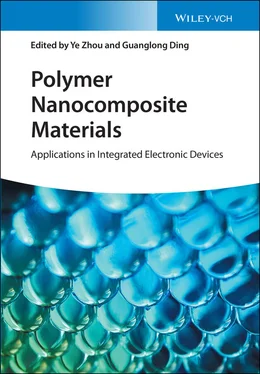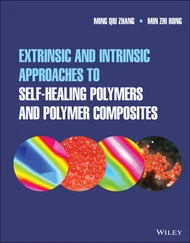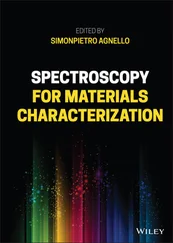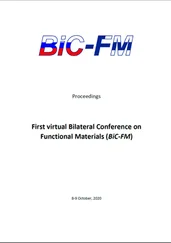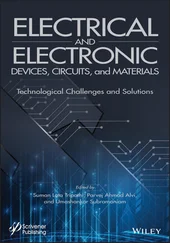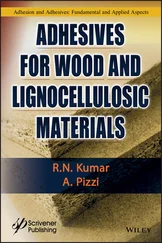1 ...7 8 9 11 12 13 ...21 109 109 Buzaglo, M., Bar, I.P., Varenik, M. et al. (2017). Graphite-to-graphene: total conversion. Adv. Mater. 29: 1603528.
110 110 Teng, C., Xie, D., Wang, J. et al. (2017). Ultrahigh conductive graphene raper based on ball-milling exfoliated graphene. Adv. Funct. Mater. 27: 1700240.
111 111 Gu, J., Guo, Y., Lv, Z. et al. (2015). Highly thermally conductive POSS-g-SiCp/UHMWPE composites with excellent dielectric properties and thermal stabilities. Compos. Part A: Appl. Sci. Manuf. 78: 95–101.
112 112 Gu, J., Xie, C., Li, H. et al. (2013). Thermal percolation behavior of graphene nanoplatelets/polyphenylene sulfide thermal conductivity composites. Polym. Compos. 35: 1087–1092.
113 113 Wu, C.L., Zhang, M.Q., Rong, M.Z., and Friedrich, K. (2002). Tensile performance improvement of low nanoparticles filled-polypropylene composites. Compos. Sci. Technol. 62: 1327–1340.
114 114 Fawaz, J. and Mittal, V. (2014). Synthesis of Polymer Nanocomposites: Review of Various Techniques. Wiley-VCH.
115 115 Kim, I.-H. and Jeong, Y.G. (2010). Polylactide/exfoliated graphite nanocomposites with enhanced thermal stability, mechanical modulus, and electrical conductivity. J. Polym. Sci., Part B: Polym. Phys. 48: 850–858.
116 116 Villmow, T., Pötschke, P., Pegel, S. et al. (2008). Influence of twin-screw extrusion conditions on the dispersion of multi-walled carbon nanotubes in a poly(lactic acid) matrix. Polymer 49: 3500–3509.
117 117 Zou, H., Wu, S., and Shen, J. (2008). Polymer/silica nanocomposites: preparation, characterization, properties, and applications. Chem. Rev. 108: 3893–3957.
118 118 Venugopal, G., Veetil, J.C., Raghavan, N. et al. (2016). Nano-dynamic mechanical and thermal responses of single-walled carbon nanotubes reinforced polymer nanocomposite thinfilms. J. Alloys Compd. 688: 454–459.
119 119 Moniruzzaman, M., Du, F., Romero, N., and Winey, K.I. (2006). Increased flexural modulus and strength in SWNT/epoxy composites by a new fabrication method. Polymer 47: 293–298.
120 120 Isayev, A.I., Kumar, R., and Lewis, T.M. (2009). Ultrasound assisted twin screw extrusion of polymer–nanocomposites containing carbon nanotubes. Polymer 50: 250–260.
121 121 Hanemann, T. and Szabó, D.V. (2010). Polymer-nanoparticle composites: from synthesis to modern applications. Materials 3: 3468–3517.
122 122 Caseri, W.R. (2013). Nanocomposites of polymers and inorganic particles: preparation, structure and properties. Mater. Sci. Technol. 22: 807–817.
123 123 Xiong, M., Zhou, S., Wu, L. et al. (2004). Sol–gel derived organic–inorganic hybrid from trialkoxysilane-capped acrylic resin and titania: effects of preparation conditions on the structure and properties. Polymer 45: 8127–8138.
124 124 Cao, Z., Jiang, W., Ye, X., and Gong, X. (2008). Preparation of superparamagnetic Fe3O4/PMMA nano composites and their magnetorheological characteristics. J. Magn. Magn. Mater. 320: 1499–1502.
125 125 Vollath, D. and Szabó, D.V. (1999). Coated nanoparticles: a new way to improved nanocomposites. J. Nanopart. Res. 1: 235–242.
2
Fabrication of Conductive Polymer Composites and Their Applications in Sensors
Jiefeng Gao
Yangzhou University, School of Chemistry and Chemical Engineering, No 180, Road Siwangting, Yangzhou, Jiangsu, 225002, China
Compared with traditional conductive materials like metals, conductive polymers (CPs) exhibit excellent flexibility, light weight, low cost, and easy processing characteristics. Therefore, CPs have become the research hotspot in recent decade and been widely used in many fields such as electromagnetic interference (EMI) shielding, sensors, and wearable electronics [1–3]. Generally, CPs can be divided into two categories: (i) structural (intrinsic) structural conductive polymers (SCPs) and (ii) conductive polymers composites (CPCs).
SCPs refer to a material possessing inherent conductivity provided by the structure carrier. The SCPs were firstly discovered in the 1970s, which aroused the attention of researchers on the chemical structure and the electrical properties of polymers [4, 5]. The common types of SCPs possessing conjugated bonds are polyacetylene, polypyrrole (PPy), polyaniline (PANI), polyphenylacetylene (PPA), and their derivatives. However, the value of electrical conductivity for the conjugated polymer materials is relatively small, usually ranging from 10 −10to 10 −5S cm −1. The electrical conductivity of polymer materials can be enhanced by 10 4S cm −1by doping various molecules like salt ions, hyaluronic acid, and peptides [6, 7]. The doped SCPs show both electrical conducting property from metallic material and many merits like flexibility, lightweight, etc., from polymer material. Therefore, The SCPs have demonstrated their potential applications in flexible electronics, sensors, and EMI shielding [8–10]. However, the SCPs have their inherent deficiencies including poor solubility, mechanical properties, and high cost. Usually, further modification or compounding with other polymers is needed to improve their overall performance [11].
CPCs refer to one kind of electrically conductive polymer composite materials fabricated by incorporating the conductive fillers [carbon black (CB), carbon nanotubes (CNTs), graphene, etc.] into insulating polymer matrix [12–14]. The electrical conductivity of CPCs is highly related with the percolated conductive network constructed by different conductive nanofillers. It is believed that most of the resistance comes from tunneling between adjacent conductive fillers dispersed in polymer matrix [15]. CPCs based on non-conductive polymer elastomers and conductive fillers have caused wide concern of both academic and industrial group and become a hot topic of polymer composites due to its easy preparation, controllable electrical property, excellent flexibility, and stretchability. In this chapter, we systematically introduce the development and prospect of CPCs through several parts including the fabrication method of CPCs, morphology, and microstructure of CPCs and their application as sensors.
2.2 Fabrication Methods for CPCs
As known, conductive fillers, especially nano-sized conductive particles, are easy to aggregate in the polymer due to their high-aspect-ratio, resulting in uneven distribution, which may deteriorate the comprehensive performance of CPCs [16]. Therefore, surface modification of nanofillers and special processing technique are required to enhance the dispersion of conductive nanofillers in the polymer, which mainly includes the following methods: (i) The physical blending [17]. The conductive particles are uniformly dispersed into the polymer melt matrix or polymer solution under the ultra-strong external field forces (shear, tensile, etc.). (ii) In situ polymerization [18]. The conductive particles were firstly dispersed in the organic solvent containing the polymer monomer. After the polymerization reaction, the previously evenly dispersed conductive particles were anchored in the polymer matrix in situ. (iii) Chemical modification of conductive filler [19]. After the chemical reaction, the surface of conductive particles is grafted with functional groups such as hydroxyl group, carboxyl group, amino group, etc. These groups have good interactions with the polymer, such as covalent bond and hydrogen bond, which can effectively avoid the nanofillers aggregation and hence improve their dispersion in the polymer matrix. (iv) Introduction of surfactant [20]. The surfactant will wrap around the conductive particles, increasing their compatibility in polymer solution or melt, thus improving the dispersion of the fillers.
For CPCs, the electrical conductivity is depended on the transportation of charge carriers (current) along the conductive network constructed by conductive fillers in the polymer matrix. Generally, a sudden increase of several orders of magnitude in conductivity (transition from insulator to conductor) can be found as the concentration of conducting phase reaches a critical value in the polymer matrix, which is defined as the percolation threshold. Above this threshold, the concentration dependence of the conductivity of the CPCs (σ) can be described by a scaling law
Читать дальше
